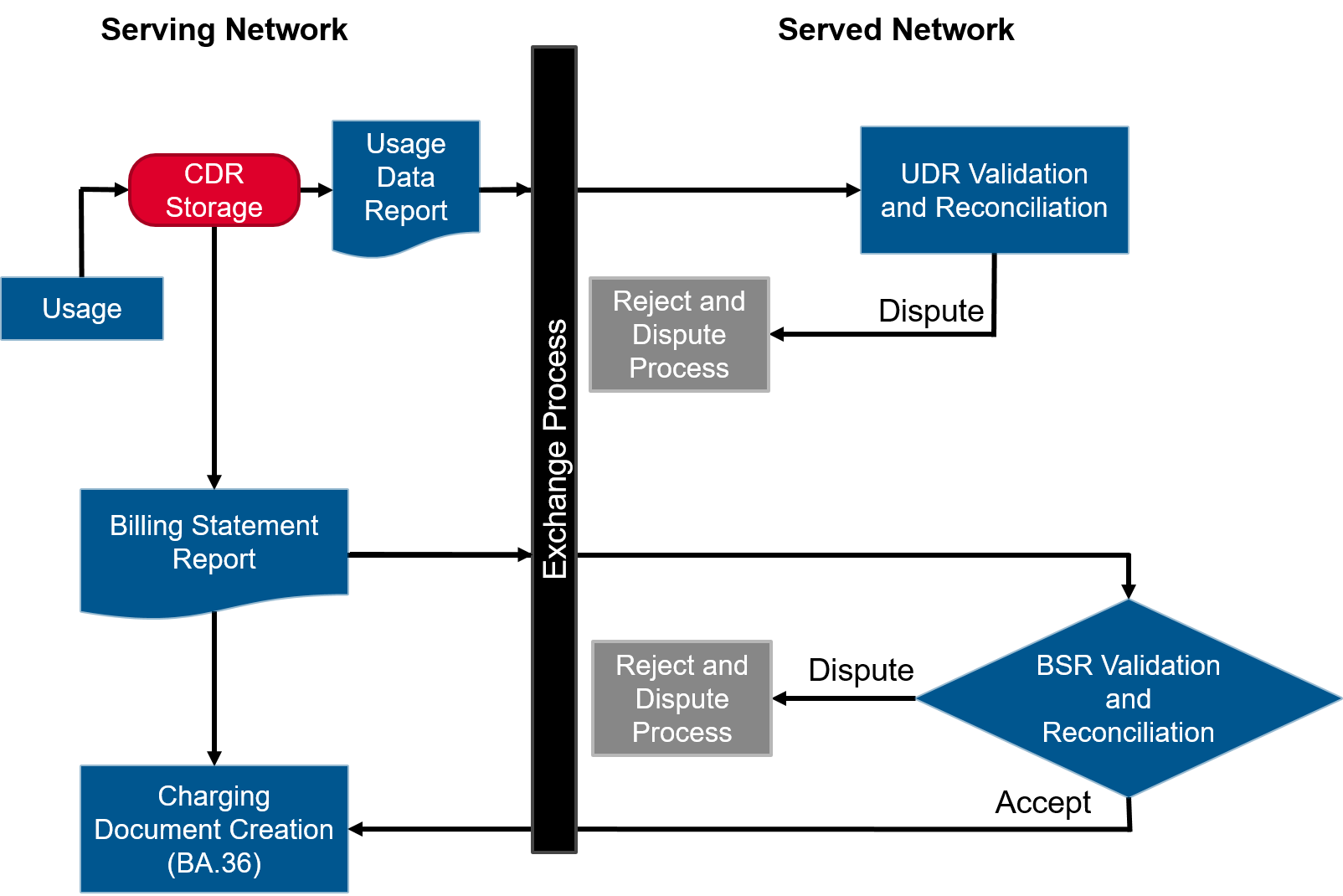BCE is the billion-dollar opportunity for mobile network operators.
Many IoT use cases—such as logistics and goods tracking, fleet management, connected vehicles and health monitoring—are based on national and international roaming. But if mobile network operators can’t charge correctly for roaming, they can’t monetize IoT services. That’s where BCE (Billing and Charging Evolution) saves the day.
BCE helps mobile network operators increase revenue by offering innovative, new IoT services to their customers. According to Kaleido Intelligence, BCE presents mobile network operators with an opportunity to monetize low-bandwidth permanent roaming (IoT) devices and generate more than $2 billion annually in untapped wholesale revenue by 2026. And BCE-enabled automated settlement in wholesale roaming will enable a cumulative $5 billion in savings by 2026.
If billions of dollars of revenue and cost-saving opportunities aren’t enough reasons for operators to adopt the BCE standard, there are many other important benefits.
Out With the Old: TAP Is No Longer Fit for Purpose
Designed to handle roaming and billing settlements primarily for voice and SMS data, the old billing approach—TAP (Transfer Account Procedures)—isn’t flexible enough to handle the large volumes of data and variety of use cases such as 5G network slicing. TAP is now in maintenance mode and will be replaced by BCE in the coming years.
TAP Limitations
- Too complex, rigid and costly for 5G and IoT technologies
- Cannot cope with the large numbers of events generated by 5G, particularly IoT devices
- TAP’s event-based charging mechanisms are not suited to monetize new business models and could lead to billing errors
- Cannot support future charging models, especially for 5G Standalone (SA) services
TAP’s billing mechanism relies primarily on event-based charging. This means permanently roaming IoT devices that consume little data—but use significant network resources—generate only modest revenue for operators. IoT devices which are effectively silent for long time periods and consume small amounts of data are therefore not monetized.
For an IoT system with millions of sensors, the activity of each sensor on its own is worth very little. But when you add all the activity together, it becomes highly valuable—if you can charge for it correctly.
In With the New: BCE Is the Future of Roaming Settlement
Developed by GSMA to address TAP’s limitations, the Billing and Charging Evolution (BCE) standard is “a simplified and flexible optional settlement method, tailor-made for future wholesale roaming settlement needs of operators.”
BCE offers the flexibility to support new services (such as 5G slicing and IoT), business models, partner ecosystems, and enhanced charging and discounting models.
BCE supports wholesale roaming settlement in 5G and IoT and allows operators to agree on settlement windows between themselves (monthly, quarterly, annually or bespoke). Operators can use commercial models (such as volume and tier agreements) that support the monetization of 5G use cases. BCE enables a new standardized reconciliation process: reconcile usage or charge or both.
Expected to be finalized in Q4 2023, BCE 2.0 will support data formats and charging models needed to support new 5G SA services such as 5G network slicing. The BCE 2.0 standard will be a mandatory requirement for 5G SA services.
How BCE Roaming Settlement Works
With the flexible BCE approach to roaming settlement, TAP files or raw event detailed records (EDRs) don’t need to be exchanged. Instead, the settlement process is “driven by new formats like Usage Data Report, Billing Statement Report and Detailed Data Record which together build a robust framework for seamless revenue assurance.” The serving party (visited operator) shares these BCE reports with the served party (home operator), and uses them to generate invoices.
[Source: GSMA: https://www.gsma.com/aboutus/workinggroups/interoperability-data-specifications-and-settlement-group/billing-and-charging-evolution ]
Why Should Operators Adopt BCE?
- BCE is a must-have for 5G and IoT
- BCE will gradually and eventually replace TAP
- Serving parties and served parties have access to the same usage information generated in their respective networks, improving the accuracy of settlements and reducing disputes.
6 Benefits of BCE Roaming Settlement for Operators
Flexibility and control.
BCE is more flexible and less prescriptive than TAP, allowing operators to define their wholesale bilateral roaming agreements, such as:
- Data exchange frequency
- Settlement windows (monthly, quarterly, annually or bespoke)
- How to manage financial transactions efficiently
Increased process efficiency.
BCE reduces the need for frequent data exchanges (mandated under TAP), saving operators time and money. Reduced data exchange is especially valuable when dealing with data-intensive services such as IoT, 5G SA roaming and permanent roaming (e.g., IoT devices).
Support for new 5G and IoT services.
BCE is essential for 5G SA Roaming. BCE supports a range of charging and settlement models, including count-based (e.g., IMSI count) and volume-based charging.
Automated reconciliation.
BCE enables accurate and timely reconciliation of charges between operators for roaming services. Operators reconcile invoices against home-generated event records (EDRs) for events happening in the visited network, preventing unnecessary outpayments and speeding up dispute resolution. Home-generated EDRs can be promptly passed on to Fraud Management and other downstream systems without waiting for data from the visited network.
Reduced costs through decreased reliance on clearing houses.
With BCE, home routing of roaming events means that operators can settle directly, reducing clearing house scope and associated fees.
Reduced costs through reusing an existing settlement system.
Because wholesale roaming settlement with BCE is very similar to traditional intercarrier settlement and reconciliation processes, operators can reuse core functionalities from their existing settlement systems for roaming settlement. Operators thus save money by reducing their software and hardware footprint.
Best Practices for Adopting BCE Roaming Settlements
- Adopt BCE now. Operators don’t have to wait for 5G SA roaming to adopt BCE. They can start using BCE for services such as NB-IoT (NarrowBand IoT), building readiness for 5G SA in the process.
- Use one settlement system for TAP and BCE. Administer existing TAP agreements and new BCE agreements in the same settlement system that deals with intercarrier and partner settlement. Increasingly, intercarrier settlement and roaming settlement departments are merging within different operator organizations, motivated by a desire to reduce costs. Operators need a holistic view across intercarrier and roaming agreements with the same partner operator. Using one settlement system for both simplifies the conversion of TAP agreements into BCE over time.
- Take direct control of roaming agreements. By administering roaming agreements in-house, operators increase autonomy over the most important factors: cost and revenue. This helps operators react quickly and accurately to ongoing changes (e.g., frequent rate changes) and track discount and volume agreements on a consistent basis.
In summary, operators don’t have to wait for 5G SA to adopt BCE roaming. With the widespread launch of 5G SA services in the next two years, BCE will become an absolute essential. But operators are already embracing BCE to support services such as NB-IoT. BCE is a valuable tool that can help operators increase their revenues by offering new, innovative services to their customers.
CSG’s digital partner management solution allows operators to manage TAP and BCE roaming, as well as wholesale/partner settlements, from a unified solution. The solution builds on CSG’s world leading digital wholesale expertise deployed at 200+ carriers globally.
- Supports new charging models
- Automates reconciliation
- Accurate invoices with fewer disputes
- Lowers total cost of ownership
- Scalable to 5G event volumes
- Maintains full audit and data integrity
- Significant year-on-year R&D investment in product roadmap that tracks evolving GSMA standards
Contact us for more information on our BCE roaming and digital partner management solutions.

